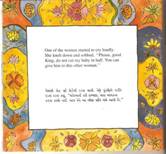RE and EAL
EAL learning and teaching in Religious Education

Many EAL learners come from families where a religious tradition, whether Muslim, Christian or Hindu, is highly valued. This should mean that they also bring to RE plenty of personal experience of a faith tradition on which they may build a more academic understanding of their own and others beliefs and experiences. Creation of a classroom that recognises through display and openness to their backgrounds and experiences is therefore an important starting point. It is important to note at this point that Religious Education should include experiences of faith that the learners can recognise as similar to their own.
However the study of Religious Education also demands thinking processes and skills that are not necessarily part of a child’s religious heritage. This may especially be the case in traditional approaches to faith where religious texts are primarily to be recited or retold rather than applied or interpreted. However research suggests these literacies have their benefits in the development of a child’s linguistic skills.
The Religious Education classroom can be made a lot more EAL-friendly by ensuring that it is rich in visual support. This will include objects, posters and photographs that invite questions. It may be appropriate to have some key words displayed in a variety of the major languages in the school as well as English. Whether in spoken or written English Religious Education has a large and new vocabulary required by its content. It also uses a lot of general vocabulary that may be of an unfamiliar register or completely unknown to EAL learners. The foundation for building vocabulary and language skills is talk. Whereas whole class talk can model how ideas can be expressed and explained, paired and small group discussion activities that ensure that every learner has an extended opportunity to develop and express their opinion are also needed.
In this section of the website you can find articles and frameworks to help you in teaching EAL and Religious Education.